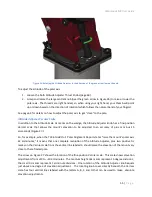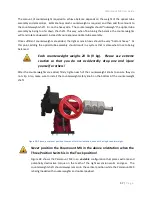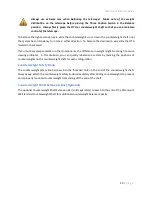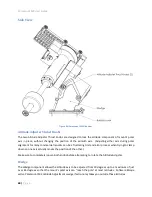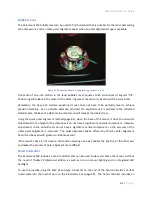
Paramount MX User Guide
68 |
P a g e
the mount.
Remember, the mount and control system are pointing to the equatorial coordinate
where the object “would be” if the mount is aligned with the pole.
Once the object is centered on the eyepiece, the mount’s polar axis should be within
about five arcminutes of the pole. You might want to repeat the above procedure just
to make sure you have done everything right.
After adjusting the mechanical axis, slewing to a star from
TheSkyX Professional Edition
should now place the object in the eyepiece.
Figure 34: The OTA’s optical and mechanical non-perpendicularity errors degrade the accuracy of the quick polar alignment
method.
Note that optical and mechanical non-perpendicularities in the telescope and the declination axis play a
key factor in the accuracy of the quick polar alignment procedure. If these misalignments are large (in
the order of 30 arcminutes or greater), the initial polar alignment will necessarily not be as accurate.
Precise Polar Alignment
The mount’s equatorial axis should be aligned to within 100 arcseconds of the refracted pole for optimal
tracking performance. The recommended methods to achieve precise polar alignment are by using
TPoint or the Paramount MX polar alignment scope.
Using TPoint for Precise Polar Alignment
The
TPoint Add On
window includes a
Polar Alignment Report
that shows the mount’s polar alignment
error after performing a pointing calibration run. The report also gives the amount of adjustment
required in each axis to align polar axis to the refracted pole.
If you are not familiar with TPoint, or pointing calibration, or the
Polar Alignment Report
, please refer to
the
TPoint Add On
User Guide for more information.


